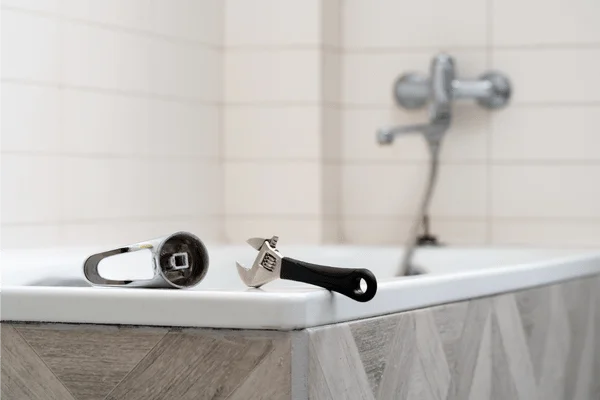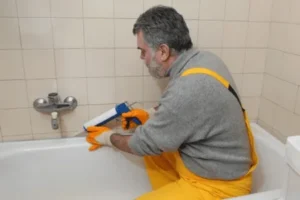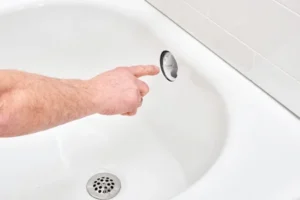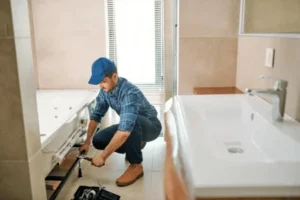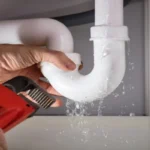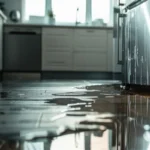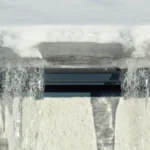Bathtub leaks are a common household issue that can lead to costly damage if not addressed promptly. You might first notice water stains on ceilings or walls, or even a sudden increase in your water bill—both signs of a hidden leak. These leaks often result from worn-out seals, cracked surfaces, or dripping faucets. What starts as a minor issue can quickly escalate if left unchecked.
Fixing bathtub leaks starts with identifying the source. A leaky bathtub faucet or a bathtub stopper leak can waste water and cause damage. If water leaks from bathtub faucet areas persist, start troubleshooting leaks in the bathtub promptly to prevent costly repairs and ensure efficient water usage in your home.
Fortunately, many of these problems have straightforward solutions if caught early. In this guide, we’ll explore the typical causes of leaks in your bathtub and provide practical steps to fix them.
Let’s take a closer look now!
Common Causes of Bathtub Leaks
Common culprits of having leaks in a bathtub include leaky faucets, cracked surfaces, and faulty caulking or grout. By understanding these issues, you can take the right steps to fix the problem.
Leaky Bathtub Faucets
Worn washers, damaged O-rings, and loose connections are common causes of water dripping from your tub even when it’s not in use. A malfunctioning stopper can also allow water to escape, adding to the problem.
While these issues are often easy to fix, many homeowners overlook them until they escalate into more significant concerns. Staying on top of minor repairs helps conserve water and prevent costly damage, especially when addressing a leaky bathtub faucet.
Cracked or Damaged Bathtub Surface
Cracks or chips in a bathtub surface can lead to hidden leaks. Over time, daily use causes wear that allows water to seep through unnoticed. Look for rough patches, stains, or discoloration.
Small cracks can be sealed with a repair kit, but larger damage may require a pro. Early action can prevent water damage and save money.
Faulty Caulking or Grout
Worn-out caulking or cracked grout allows water to seep behind tiles and into walls. Over time, moisture breaks down these protective barriers, allowing leaks to occur.
Check for gaps, peeling, or discoloration. Remove old material and reapply fresh caulk or grout specifically designed for use in wet areas. Keeping these seals intact helps avoid leaks and prevents long-term water damage in your bathroom.
Leaky Drain or Overflow Pipe
Leaks around the drain or overflow pipe can cause water to pool beneath the tub. Loose fittings, worn gaskets, or corroded parts are often to blame. Inspect connections regularly and tighten or replace as needed.
Addressing these leaks early prevents severe structural damage. If unsure, call a plumber to handle stubborn issues and keep your bathtub leak-free.
Solutions for Fixing Bathtub Leaks
Now that you know the common causes of bathtub leaks, it’s time to tackle the solutions. Let’s explore each of these options so you can get your bathtub back in top shape.
Replacing the Bathtub Faucet
A leaky bathtub faucet not only wastes water but can also cause gradual damage to your bathroom surfaces. Start by shutting off the water supply. Remove the handle, trim, and faucet body using the appropriate tools. Follow the replacement faucet’s instructions carefully, ensuring each connection is secure.
After installation, turn the water back on and check for drips. Even a slow leak should be addressed immediately. Replacing a faulty faucet is a manageable DIY task that restores proper function, reduces your water bill, and helps prevent further plumbing issues over time.
Repairing Cracks in the Bathtub
Even small cracks in your bathtub can lead to serious water damage if left untreated. Begin by cleaning the area with a mild cleaner and allowing it to dry fully. Use a fiberglass repair kit or epoxy resin to fill the crack, smoothing the application evenly. Once cured, lightly sand the surface and apply a waterproof sealant.
This not only restores the tub’s appearance but also prevents moisture from seeping through. Regularly inspecting your bathtub for damage and addressing any cracks promptly can help prevent expensive repairs and extend the life of your fixture.
Re-Caulk or Re-Grout the Bathtub Edges
Cracked or missing caulk and grout around your bathtub can allow water to leak into the walls and flooring. Start by removing all old material with a scraper or caulk remover. Clean the area thoroughly and allow it to dry. Apply high-quality, mold-resistant caulk or grout along the seams and edges, smoothing it out for a clean finish. Let it cure fully before using the bathtub.
This preventive maintenance helps prevent leaks before they start, protecting your bathroom from water damage and mold growth while enhancing the overall appearance and durability of your tub area.
Fixing the Drain and Overflow Pipe
Leaks from the bathtub’s drain or overflow pipe can be tricky to spot, but they can cause significant water damage if ignored. Start by checking under the tub for signs of moisture or rust. Tighten any loose connections and replace cracked washers or gaskets as needed. Use plumber’s tape for a snug seal. After reassembly, run water and monitor for leaks.
If the issue persists, consider replacing the entire drain assembly. Routine inspections and repairs help maintain your plumbing, prevent future leaks, and keep your bathtub operating smoothly and safely for years to come.
Preventing Future Bathtub Leaks
Fixing bathtub leaks starts with identifying the source. A leaky bathtub faucet or water leaks from a bathtub faucet can waste water fast. Bathtub stopper leaks may also be the culprit. Learn tips for troubleshooting leaks in the bathtub to save money, prevent damage, and restore proper function.
To avoid costly damage, prioritize preventive steps to stop water leaks from the bathtub faucet. Regular daily inspections, proper sealant, and ongoing, timely maintenance ensure a dry, worry-free bathroom for years to come.
Regular Maintenance Checks
Regular maintenance checks catch minor issues early, preventing costly water damage. Follow these steps to keep your bathtub leak-free while preserving its durability:
- Examine caulk lines around tub edges; replace cracked or peeling caulk to prevent water seepage.
- Tighten loose faucet and showerhead fittings, replace worn washers, and lubricate moving components to prevent persistent drips.
- Inspect drain seals and interior mechanisms; check for bathtub stopper leaks that can hide persistent drips.
- Test and regulate water pressure; high flow can strain pipes and encourage undetected leaks to form.
- Examine the tub’s surface for chips or hairline cracks, then patch promptly using a durable repair kit.
- Clean thoroughly to prevent mold and mildew buildup, which can conceal minor leaks and damage finishes.
The Importance of Professional Inspections
Preventing bathtub leaks starts with regular professional inspections. Here’s why scheduling one is a smart move for any homeowner:
- Early Detection: Professionals can identify minor issues, such as worn seals, loose fittings, or early-stage corrosion, before they develop into major leaks.
- Hidden Problem Identification: Experts check behind walls, under tubs, and around plumbing connections—areas most homeowners overlook.
- Proper Repair Recommendations: You’ll receive expert advice on the best materials and techniques to effectively repair or maintain your tub.
- Leak Prevention: By catching issues early, inspections help you avoid water damage, mold, and structural problems.
- Peace of Mind: Knowing your bathtub is in good condition reduces the stress and cost of unexpected repairs.
Don’t wait for a leak to cause damage. Regular inspections are a small investment that protects your bathroom and extends the life of your bathtub.
Troubleshooting Bathtub Leaks- Final Thoughts
By understanding the common causes of tub leaks and addressing them promptly, you can avoid costly repairs and water damage.
Regular maintenance checks and professional inspections play an essential role in keeping your bathtub leak-free. Stay vigilant for signs such as water stains and mold growth, and don’t hesitate to address issues like leaky faucets or faulty caulking. With a proactive approach, you can ensure your bathtub remains a safe and enjoyable space for years to come.
Fixing bathtub leaks starts with identifying the problem. Whether it’s a leaky bathtub faucet or water leaks from the bathtub faucet fixtures, timely repair is key. With these tips in mind, you are better equipped to troubleshoot leaks in the bathtub, preventing damage and saving on water bills.
Bathtub leaks can cause significant water damage. Call now for fast and efficient leak repairs to ensure the safety of your home.

